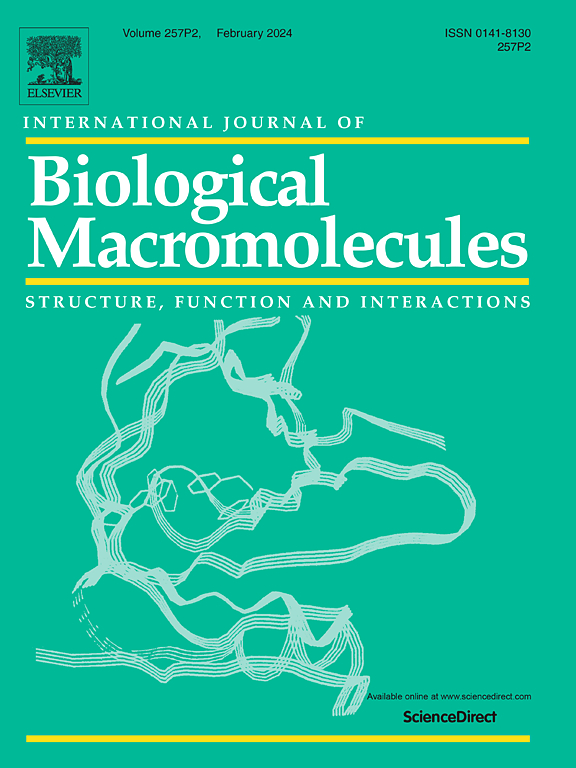通过核酸创新提高作物抗灾能力:促进粮食安全和气候适应的根际工程
IF 7.7
1区 化学
Q1 BIOCHEMISTRY & MOLECULAR BIOLOGY
International Journal of Biological Macromolecules
Pub Date : 2025-04-18
DOI:10.1016/j.ijbiomac.2025.143194
引用次数: 0
摘要
根际工程已成为应对气候变化、粮食安全和环境可持续性等紧迫挑战的一种变革性战略。通过利用植物和微生物以及环境过程之间的动态相互作用,这种方法为提高作物产量、防治病虫害和修复受污染的环境提供了创新的解决方案。这篇综述探讨了在气候变化条件下,如何利用基于植物和微生物的根际工程来提高作物生产力、管理病虫害和修复受污染的环境。我们研究了气候变化驱动因素(如CO2升高、N沉降增加、温度升高和降水模式改变)对植物-微生物相互作用和根际过程的影响。研究表明,气候变化影响了土壤有机质的呼吸、分解和稳定、养分循环、温室气体排放和微生物群落动态等关键功能。尽管存在这些挑战,但工程根际可以通过改善根沉积、固氮、根构型改变、选择性微生物招募和病原体控制来减轻气候变化的不利影响,同时增强土壤的碳分配和稳定性。然而,这些技术的部署并非没有挑战。生态风险,如意外的基因转移和原生微生物群落的破坏,以及社会经济障碍,必须认真解决,以确保安全和可扩展的实施。我们发现了关键的研究空白,如对工程根际系统中多分类群合作和可扩展性的有限理解,以及对设计植物和微生物的机制理解如何在全球变化下促进农业和农林业的作物生产、保护和环境修复。本文章由计算机程序翻译,如有差异,请以英文原文为准。

Advancing crop resilience through nucleic acid innovations: rhizosphere engineering for food security and climate adaptation
Rhizosphere engineering has emerged as a transformative strategy to address the pressing challenges of climate change, food security, and environmental sustainability. By harnessing the dynamic interactions between plants and microbes, and environmental processes, this approach offers innovative solutions for enhancing crop production, protecting against pests and diseases, and remediating contaminated environments. This review explores how rhizosphere engineering, both plant-based and microbe-based, can be leveraged to enhance crop productivity, manage pests and diseases, and remediate contaminated environments under shifting climate conditions. We examine the effects of climate change drivers such as elevated CO2, increased N deposition, rising temperatures, and altered precipitation patterns, on plant-microbe interactions and rhizosphere processes. We show that climate change impacts key functions, including respiration, decomposition and stabilization of soil organic matter, nutrient cycling, greenhouse gas emissions, and microbial community dynamics. Despite these challenges, engineered rhizospheres can mitigate adverse effects of climate change by improving rhizodeposition, nitrogen fixation, root architecture modification, selective microbe recruitment, and pathogen control, while enhancing carbon allocation and stabilization in soil. However, the deployment of these technologies is not without challenges. Ecological risks, such as unintended gene transfer and disruption of native microbial communities, as well as socioeconomic barriers, must be carefully addressed to ensure safe and scalable implementation. We identify critical research gaps such as the limited understanding of multi-taxon cooperation and scalability in engineered rhizosphere systems, and how mechanistic understanding of designer plants and microbes can advance crop production, protection, and environmental remediation in agriculture and agroforestry under global changes.
求助全文
通过发布文献求助,成功后即可免费获取论文全文。
去求助
来源期刊
CiteScore
13.70
自引率
9.80%
发文量
2728
审稿时长
64 days
期刊介绍:
The International Journal of Biological Macromolecules is a well-established international journal dedicated to research on the chemical and biological aspects of natural macromolecules. Focusing on proteins, macromolecular carbohydrates, glycoproteins, proteoglycans, lignins, biological poly-acids, and nucleic acids, the journal presents the latest findings in molecular structure, properties, biological activities, interactions, modifications, and functional properties. Papers must offer new and novel insights, encompassing related model systems, structural conformational studies, theoretical developments, and analytical techniques. Each paper is required to primarily focus on at least one named biological macromolecule, reflected in the title, abstract, and text.

 求助内容:
求助内容: 应助结果提醒方式:
应助结果提醒方式:


